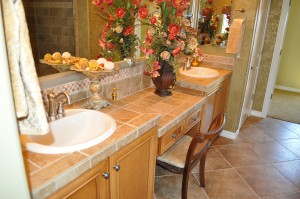 Every design decision is an opportunity not a problem. The trick is knowing how to approach each design situation.
Every design decision is an opportunity not a problem. The trick is knowing how to approach each design situation.
To get you started, begin by reviewing your home’s floor plan and assess each of the different rooms. It is important to understand how each room in the house will function and the kinds of activities that will take place. You may use areas of your home for a specific function and it is important to match your interior to that intended purpose. Also, determine your home’s traffic patterns. High traffic areas typically include hallways, downstairs and upstairs, extended entryways and additional entrances to the home. Hard surface products are advisable in these high use areas and provide greater design flexibility for the connecting rooms.
Once you know how the room will be used, you can then determine what kind of mood and style the room will reflect. Should the room be soothing and elegant such as a master bedroom suite? Or should the room be stimulating and informal such as a family room?
Again, the kinds of activities that will take place and the amount of time spent in the room will help guide you in determining the mood.
Your next step is to create a furniture plan. Take measurements of your current furniture and any new pieces and determine in which rooms they will be placed. Then, arrange or draw your furniture on a scaled floor plan. Now that the furniture has been determined, a lighting plan can be designed.
The last step is to explore decorating schemes for your different rooms. Your Design Consultant can lend a trained and professional opinion, but it is important that you create schemes that are right for you.
We hope this information helps! Remember, this process is supposed to be fun, rewarding and a reflection of your personality and style!
